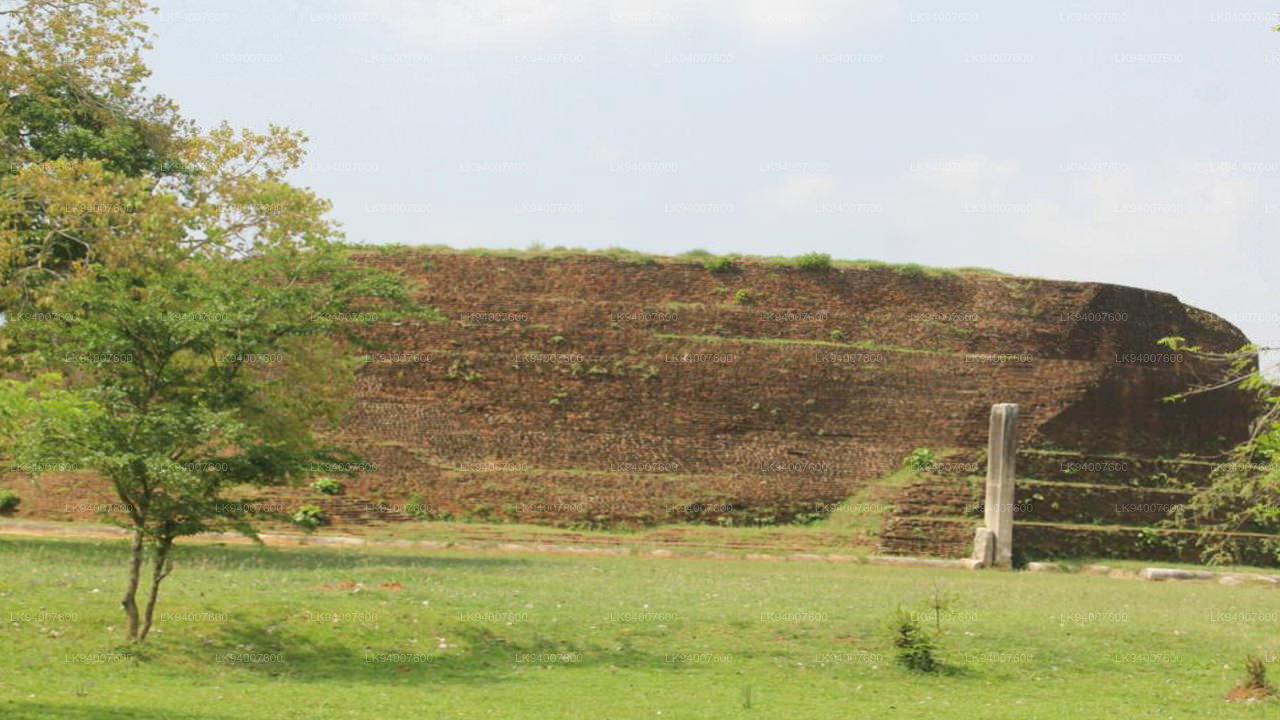
Anuradhapura City
Anuradhapura is belongs to the North Central Province in to Sri Lanka. Anuradhapura is one of the ancient capitals of Sri Lanka, famous for its well-preserved ruins of ancient Lankan civilization. The city, now a UNESCO World Heritage Site, lies 205 km north of the current capital Colombo in Sri Lanka.
Dakkhina Stupa



Dakkhina Stupa
Dakkhina Stupa ist eine große Backstein-Stupa aus dem 2. Jahrhundert v. Chr. in Anuradhapura , Sri Lanka. Früher galt es als Denkmal von König Elara, später wurde es von Senarath Paranavithana mithilfe einer Brahmi-Inschrift aus dem 3. Jahrhundert n. Chr., die aus dem Boden zwischen den südlichen und westlichen Vahalkadas von ausgegraben wurde, als Stupa des antiken Dakini (Dakkhina) Vihara identifiziert die Stupa.
Dieses Bauwerk war vor Ort jahrhundertelang als Grabstein von König Ellalan, bekannt als Elara Sohona, bekannt, der von Tamilen und Singhalesen verehrt wurde. Einige waren jedoch mit dieser Identifizierung nicht einverstanden. Es wird allgemein angenommen, dass diese Stupa über der Einäscherungsstätte von König Dutugemunu errichtet wurde.
Geschichte
Den Legenden zufolge war dieser Ort als Pulila-Terrasse bekannt, da zu dieser Zeit ein Pulila-Baum wuchs und der Thero, Mihindu, den König Devanampiya Tissa (307 v. Chr. – 267 v. Chr.) gebeten hatte, seine sterblichen Überreste hier einzuäschern. Die Legende besagt weiter, dass auf dieser Terrasse auch die sterblichen Überreste von König Dutugamunu eingeäschert wurden. Es heißt, dass dieser Stupa von einem Minister während der Herrschaft von König Valagamba (103 v. Chr. und ca. 89–77 v. Chr.) erbaut und Dhakkina thupa genannt wurde.
About Anuradhapura District
Anuradhapura is belongs to the North Central Province in to Sri Lanka. Anuradhapura is one of the ancient capitals of Sri Lanka, famous for its well-preserved ruins of ancient Lankan civilization. The city, now a UNESCO World Heritage Site, lies 205 km north of the current capital Colombo in Sri Lanka.
In the sacred city of Anuradhapura and in the vicinity are a large number of ruins. The ruins consist of three classes of buildings, dagobas, monastic buildings, and pokuna (ponds). The city had some of the most complex irrigation systems of the ancient world, situated in the dry zone of the country the administration built many tanks to irrigate the land. Most of the civilians are Sinhala, while Tamils and Sri Lankan Moors live in the district.
About North Central Province
North Central Province which is the largest province in the country covered 16% of total country's land area. North Central Province consist two districts called Polonnaruwa and Anuradhapure. Anuradhapura is the largest district in Sri Lanka. Its area is 7,128 km².
North Central Province has numerous potentials for Investors to start their Businesses, especially Agriculture, agro based industries and Livestock sectors. More than 65% of North Central Province's people depend on basic Agriculture and agro base industries. NCP also called "Wew Bendi Rajje" because there are more than 3,000 medium and large scale tanks situated in the province. Sri maha bodiya, Ruwanweli seya, Thuparama dageba, Abayagiri Monastry, Polonnaruwa Rankot wehera, Lankathilake are scared











